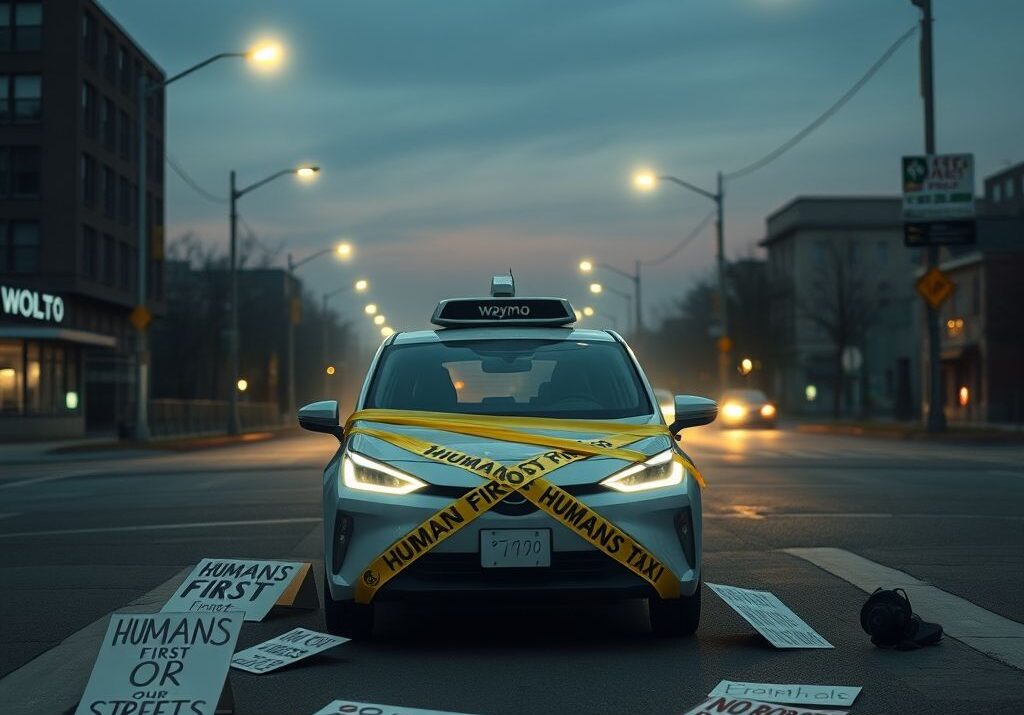Heard something interesting this morning that made me think – Waymo, Alphabet’s robotaxi company, is apparently scaling back its operations today. And why? Because of the nationwide “No Kings” protests planned against former President Trump and his policies. Now that’s a headline I didn’t expect to read today!
I stumbled across an article on TechCrunch about it, and it got me thinking about the intersection of autonomous vehicles, social activism, and public safety. Seems like even robotaxis need to take precautions when large-scale demonstrations are happening.
It makes sense when you really consider it. Autonomous vehicles rely on predictable environments to operate safely. Throw in potentially large crowds, unpredictable movements, and maybe even heightened tensions, and you’ve got a recipe for potential chaos. Waymo prioritizing safety in this situation seems like a responsible move.
According to a Pew Research Center study, only 26% of Americans feel comfortable with fully autonomous vehicles. Pew Research Center: “Public Opinion on Autonomous Vehicles” . A situation like a protest, where things can change quickly, could easily amplify those anxieties.
Moreover, data shows that large protests can significantly impact traffic flow and accessibility. A study by the National Bureau of Economic Research found that protests can disrupt local economies due to blocked roadways and reduced business activity. National Bureau of Economic Research: “The Economic Effects of Protest”
So, Waymo limiting service isn’t just about avoiding accidents, it’s also about minimizing potential disruptions and preventing their vehicles from becoming unintended obstacles during these demonstrations.
Here are my five quick takeaways:
- Safety First, Always: Even with advanced technology, human safety remains the top priority. Smart move by Waymo to err on the side of caution.
- Autonomous Tech Isn’t Immune: Autonomous vehicles aren’t immune to real-world events. Social and political climates impact everything, even robotaxis!
- Public Perception Matters: Incidents during protests could further erode public trust in self-driving cars.
- Planning is Key: This situation highlights the need for autonomous vehicle companies to develop contingency plans for unexpected events like large-scale protests.
- The Future is Here (But Not Fully): This shows that while the technology is advancing, there are still very real limitations to overcome.
Sharing this because it is a reminder that even the most futuristic tech is still subject to the realities of today. What do you all think?
FAQ: Waymo and Protests
- Why is Waymo limiting service during the “No Kings” protests? Waymo is prioritizing safety. Protests can be unpredictable and create challenging environments for self-driving cars to navigate safely.
- What are the “No Kings” protests about? The “No Kings” protests are nationwide demonstrations against former President Trump and his policies.
- Is this the first time Waymo has limited service due to external events? It’s not publicly known if they’ve done so for this specific reason before, but it’s likely they have contingency plans for various potential disruptions.
- How do protests affect autonomous vehicles? Protests can create unpredictable environments with large crowds, blocked roadways, and potential for unforeseen incidents, making it difficult for self-driving cars to operate safely.
- What happens if a Waymo vehicle gets stuck in a protest? Waymo likely has protocols in place to remotely guide or retrieve the vehicle, prioritizing the safety of passengers and protesters.
- Does this mean autonomous vehicles are unreliable? Not necessarily. It highlights the need for ongoing development to handle diverse and unpredictable real-world scenarios.
- Will other autonomous vehicle companies follow suit during protests? It’s possible. Each company likely assesses risk and makes decisions based on their own safety protocols.
- How does Waymo decide when to limit service? They likely consider factors like the size and location of the protest, potential for disruption, and risk to public safety.
- Are there any benefits to using autonomous vehicles during protests? Potentially, they could provide transportation in areas where human drivers are hesitant to go. However, the risks likely outweigh the benefits in most protest situations.
- What does this say about the future of autonomous vehicles? It reinforces the idea that autonomous vehicle technology needs to be adaptable and capable of responding to unexpected events and changing circumstances.








